Class C Motorhomes
I need to note here that I have not personally owned a class C motorhome so the information here is from research. The class C motorhome is built on a truck or van chases and is easy to spot because of their over hang of the cab which usually contains a bed. They are usually between 21 and 28 ft long and can be gas or diesel powered. They have many of the features that the large class A motorhomes have but in a smaller, more compact size. Some of the newer “class C+” motorhomes are larger and offer more luxury and features at a heftier price tag.
1. Mobility
If you plan to travel from place to place a lot as a full time RVer, then the class C motorhome might be perfect for you.
Because it is smaller, you can go into places that larger motorhomes, and trailers and fifth wheels would have difficulty going to.
The class C is very maneuverable as it is built on a regular truck chassis.
You can quite easily tow your car along so that when you get to your destination, you unhook the car and you are off for sight seeing.
Like a full size motorhome, in this mini motorhome you have access to the inside cabin while moving along. In bad weather, this can be a really comforting feature.
2. Number of People
Because of its limited size, the number of people the class C motorhome can accommodate will be modest. Generally a couple or children can sleep in the over head bunk and another couple could sleep in a pull out couch, generally a standard feature. The bathroom in a class C usually has a separate shower from the toilet and sink.
3. Physical Condition
A class C motorhome really does not require any physical strength or agility to drive and maneuver. Because it is lower to the ground than a full size motorhome/bus, it is also easier to enter and exit and requires no stairs. The larger class C+ may be higher and have stairs, however.
4. Working While Roaming
Managing a home office in a class C motorhome should not present any particular challenges. This smaller motorhome is plenty roomy, although the “desk” would likely be the kitchen table. Some research, however, will reveal that creative full timers have done some amazing remodeling to their class C homes to include mini offices.
5. Terrain
Although certainly not usually a four wheel drive vehicle, class C motorhomes can certainly be taken off road to a certain extent. They are by nature and length quite maneuverable and like any large truck, they are pretty versatile. One of the advantages of owning a smaller motorhome like a class C is the you can easily qualify for entrance to most national parks and it is generally easier to find camping opportunities than in a larger vehicle or even in a longer trailer.
6. Budget and Construction
Class C motorhomes are generally some of the less expensive RV options out there, certainly in comparison to the class A “bus”. They also hold their value somewhat better than their larger counter parts. Because they have standard truck gasoline engines they can be easier and less expensive to maintain. In many cases a good qualified small truck mechanic will be able to service and repair the basic drive train. The same i believe would be true for the diesel versions of the class C.
Class C motorhomes are also use less fuel than the larger class A motorhome
The construction of a class C motorhome by it nature of using a truck front end crumple zones and is generally safer because of this front cockpit configuration. The general construction does not vary considerably from other rvs. Generally the fresh water, gray water and black water tank capacity of a class C will be considerably less than the class A. More heavily insulated class C motorhomes are available including those with double pane windows.
7. Level of Comfort
Although they are smaller than traditional class A motorhomes, class C motorhomes can be very comfortable and luxurious. Many new models come with slides. Whether you are comfortable in a class C is very much an individual preference and as with all RVs the layout is the most important consideration.
8. Handiness
The level of handiness required in owing a class C is similar to owning any RV so previous comments made in the “Trailer” section apply here. The main difference in terms of maintenance and repair is that as an owner of a class C, you now have the added factor of the drive train (engine and transmission) As we mentioned earlier, however, the fact that this vehicle is built on a truck chassis means that often routine service and repair can be done less expensively by a truck or general service mechanic.
9. Space
Class C motorhomes can be quite roomy. Their ceilings are not particularly high and the slides and not huge, however. The newer breed of class Cs have innovative layouts with dual slides. The “super Cs” or “C+” motorhomes approach class A bus in roominess and appointments. The view to the outside in a class C is fair. The over hang prevents some of a view accept in the driver and copilot seats and the windows along the side tend to be somewhat smallish.
10. Stuff
Due to the design and construction of class C motorhomes, the storage capacity is considerably less than a fifth wheel trailer or class A motorhome. Many have a nice, roomy rear/side “basement” as the main outside storage which makes use of space under the bed in the rear. Full time RVers considering a class C will find that over all storage of “stuff” is limited. Again, the “super C” version will have considerably more storage space.
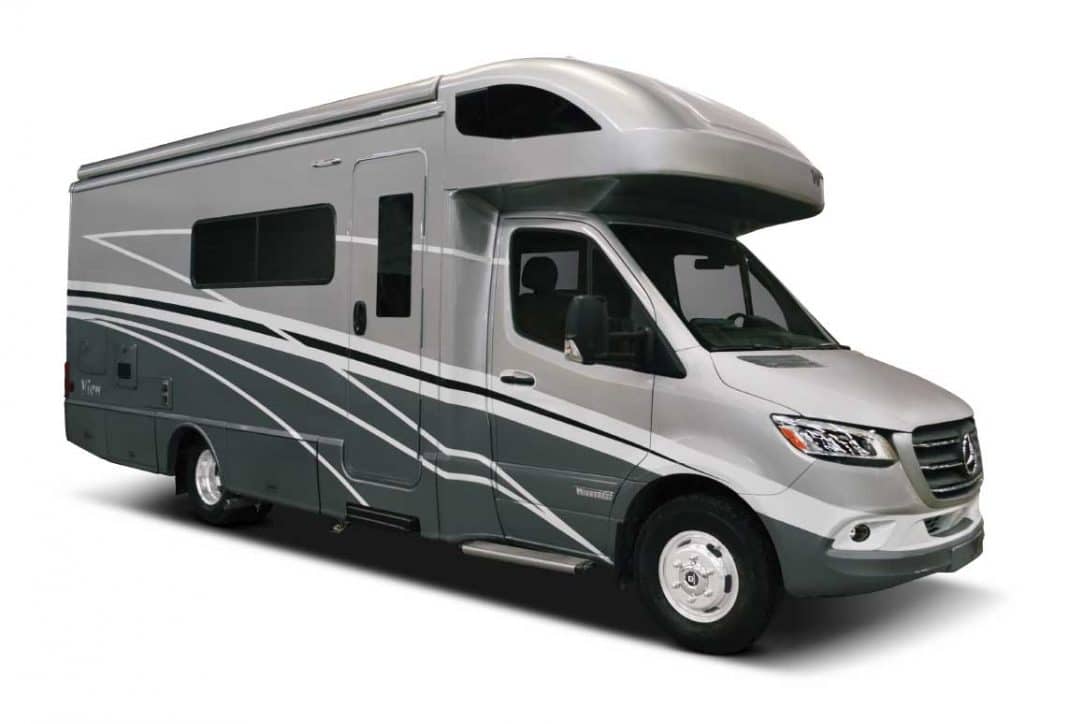 2020 Winnebago View2020 View Layout
2020 Winnebago View2020 View Layout

2020 View Layout
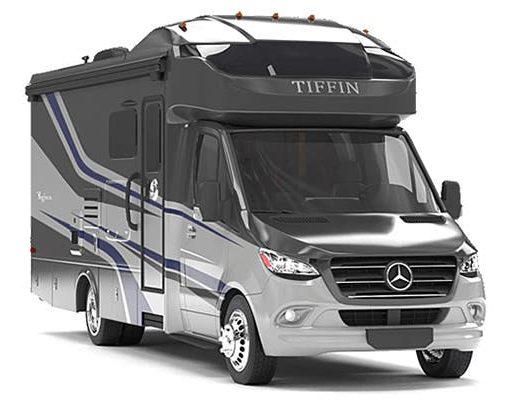 2020 Tiffin Wayfarer
2020 Tiffin Wayfarer
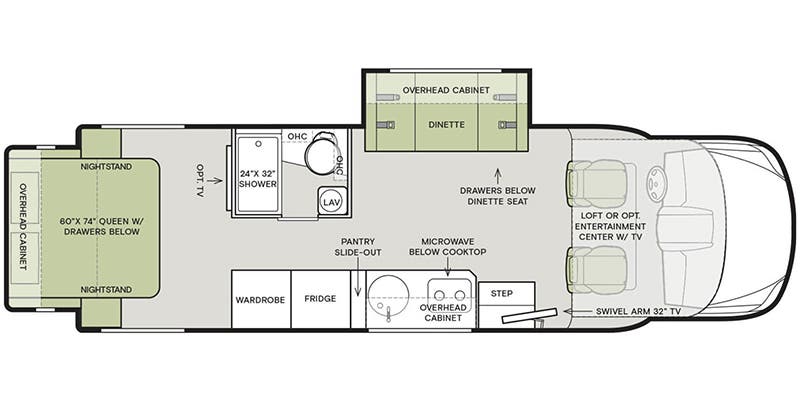 2020 Wayfarer Layout
2020 Wayfarer Layout
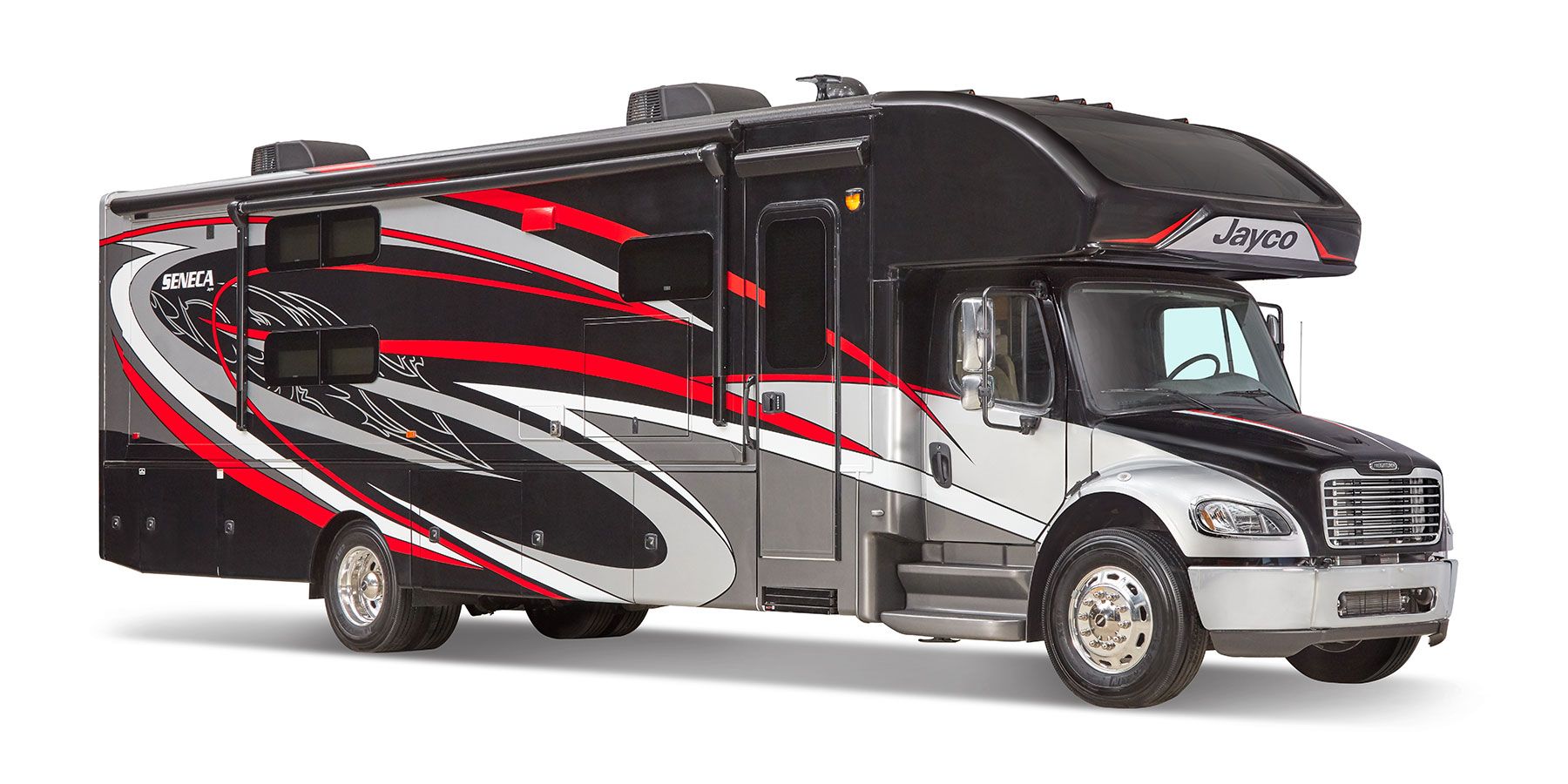 2020 Jayco Seneca 37{super C}
2020 Jayco Seneca 37{super C}
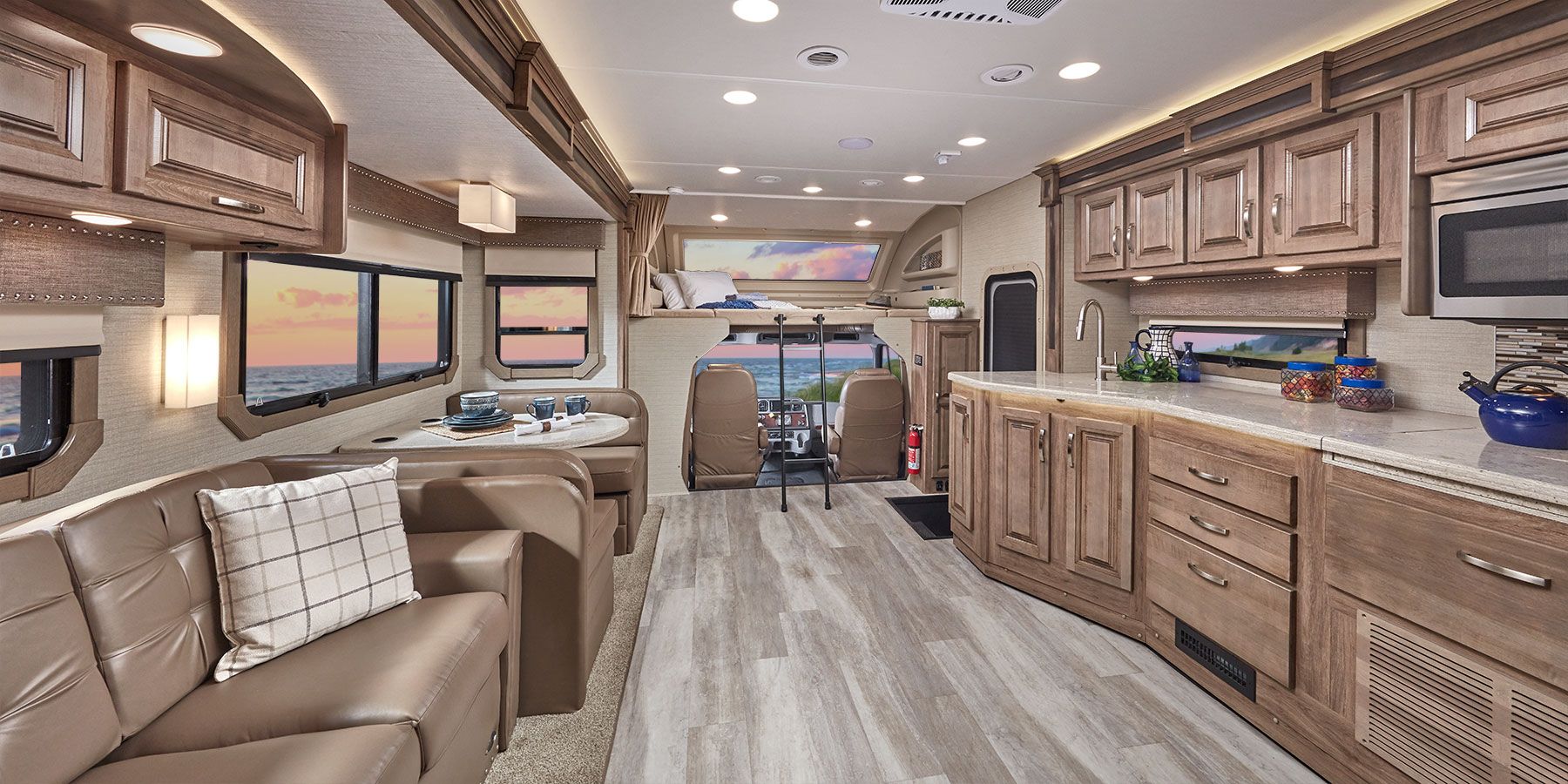 Seneca Interior back to front
Seneca Interior back to front